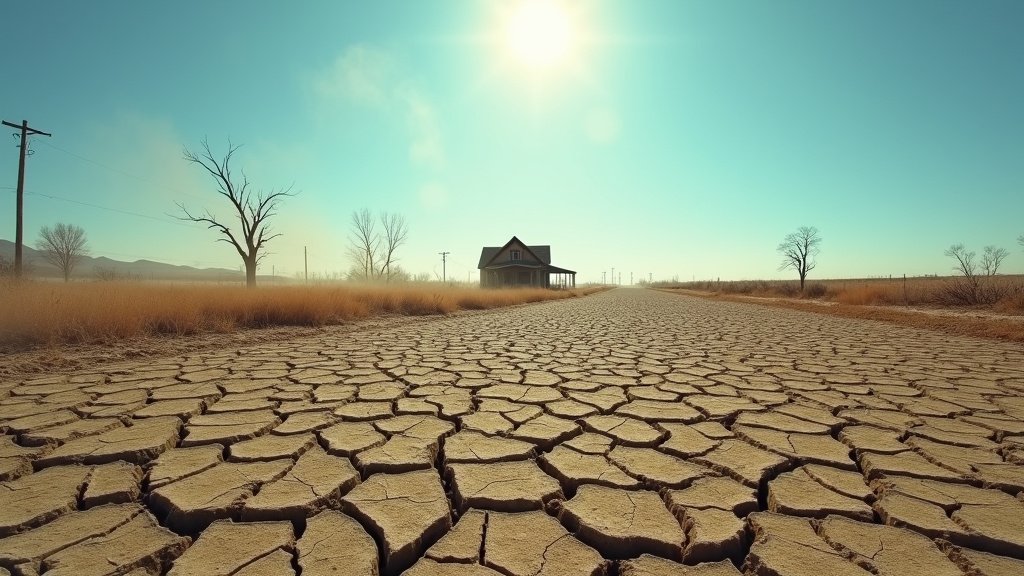Oregon Counties Face Worsening Drought Conditions, Seek State Aid
Severe drought conditions continue to plague parts of Oregon, with three more counties seeking state drought emergency declarations. The Oregon Water Resources Department announced that Union, Morrow, and Douglas counties have formally requested assistance from the state in response to the intensifying dry conditions. This development underscores the widespread impact of the drought, particularly on agricultural operations and local economies.
Economic Losses Drive Emergency Declarations
As the state grapples with these challenges, Morrow and Douglas counties specifically cited economic losses impacting farms and ranches in their paperwork. The drought has already begun to take its toll on crucial agricultural sectors, threatening livelihoods and potentially driving up food prices. Farms and ranches rely on consistent access to water for irrigation, livestock, and other essential operations. When this resource is curtailed, the economic consequences can be devastating. The state’s declaration of a drought emergency can unlock various forms of assistance, including access to emergency funds, streamlined permitting processes for water use, and coordination of resources to mitigate the impacts of the drought.
Drought Monitor Reveals Severity
The U.S. Drought Monitor, a weekly map that assesses drought conditions across the country, paints a stark picture of the situation in Oregon. As of July 22nd, the monitor indicated that severe drought conditions were present across the regions encompassing Union, Morrow, and Douglas counties. Severe drought, as defined by the Drought Monitor, signifies widespread water shortages, potential crop failures, and increased fire risk. This designation reflects the prolonged lack of precipitation, coupled with high temperatures and increased evaporation rates, that have combined to create the challenging conditions faced by these counties.
The Drought Monitor’s assessments are based on a variety of factors, including precipitation levels, streamflow data, soil moisture content, and vegetation health. The data is compiled by a partnership of federal agencies, including the National Oceanic and Atmospheric Administration (NOAA) and the U.S. Department of Agriculture (USDA), as well as state-level experts. This comprehensive approach provides a detailed and reliable understanding of drought conditions across the United States.
The Ripple Effects of Drought
The impact of drought extends far beyond the agricultural sector. Reduced water availability can affect residential water supplies, recreational activities, and ecosystems. Forest fires become a more significant threat as vegetation dries out, potentially leading to widespread property damage and health hazards. The loss of habitat and changes to water quality can also have dire consequences for wildlife and aquatic ecosystems.
Farmers and ranchers are often the first to experience the direct impacts of a drought, but the consequences ripple through the entire community. Supply chains can be disrupted, food prices may rise, and rural economies can suffer significant setbacks. Local businesses that depend on tourism or agricultural activity may struggle to survive. Droughts are a natural phenomenon, but their impacts are often exacerbated by human activities and climate change.
State Response and Assistance
The Oregon Water Resources Department is responsible for managing the state’s water resources and responding to drought emergencies. The department will review the requests from Union, Morrow, and Douglas counties and make recommendations to the governor. The governor has the authority to declare a drought emergency, which would then trigger the release of state resources and coordination with other agencies and local governments.
When a drought emergency is declared, the state can provide various types of assistance, including:
* Financial Aid: Emergency funds to help farmers and ranchers cover losses and implement water conservation measures.
* Water Conservation Programs: Support for projects that improve water-use efficiency.
* Streamlined Permitting: Expediting the process for obtaining water rights and permits for water projects.
* Technical Assistance: Guidance and support from state experts on drought mitigation strategies.
The state also works closely with federal agencies, such as the Natural Resources Conservation Service (NRCS) and the Federal Emergency Management Agency (FEMA), to coordinate responses and provide additional resources.
Looking Ahead
The situation in Oregon underscores the urgent need for proactive drought planning and mitigation efforts. As climate change continues to impact weather patterns, droughts are expected to become more frequent and severe. State and local governments must work together to develop comprehensive strategies to address these challenges, including promoting water conservation, investing in drought-resistant crops, and improving water storage and infrastructure. The actions taken today will significantly impact the future of Oregon’s economy, environment, and communities.
The additional drought declarations from Union, Morrow, and Douglas counties serve as a clear signal of the current crisis, and the state’s response will be critical in supporting these communities and building long-term resilience against future drought events.




